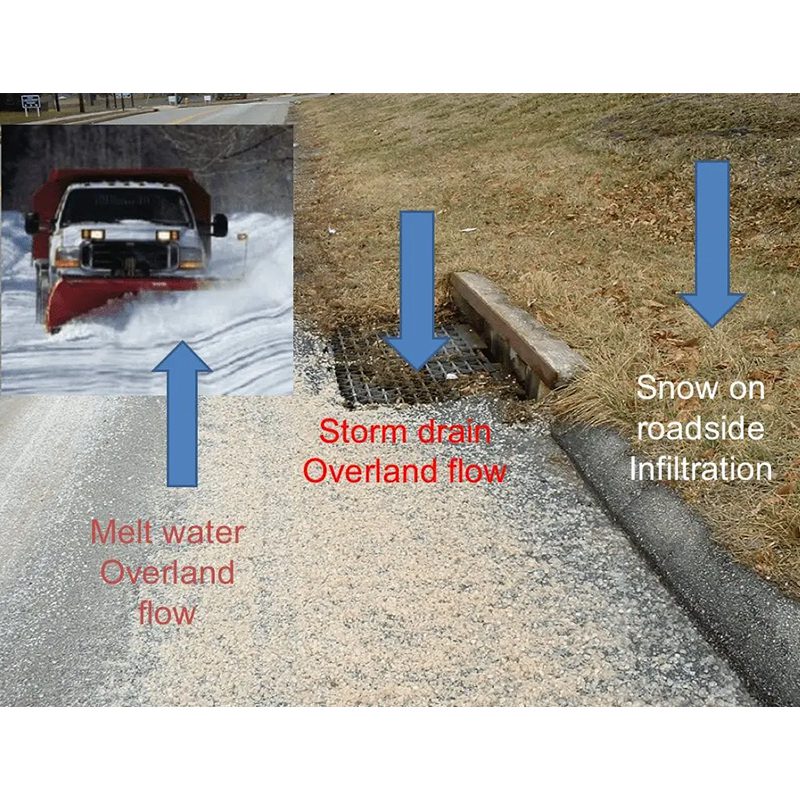113,376 tons of salt was applied to the snowy streets of Boston last winter. Where do those thousands of tons of salt go after winter thaws? Into our streams, lakes, rivers and groundwater, which is the main source of drinking water for many cities and towns.

84% of US streams measured have increased chloride concentrations, and nearly 30% percent of the sites were over the toxic chloride levels of the U.S. Environmental Protection Agency. EPA’s threshold of 230 mg/L is the chloride concentration above which the water is unsafe for wildlife. Chloride runoff from highways has been measured at over 25,000 mg/L!
In 2001, Environment Canada released a detailed five-year study on the environmental impact of road salt. They concluded that salt harmed freshwater ecosystems, soil, vegetation, drinking water, and wildlife. Road salt was then designated as a toxic substance.
We need safe roads, but we also need clean water! High chloride concentration in the water is especially dangerous for those on a low sodium diet. Excess sodium, linked with hypertension, can lead to cardiac disease, renal disease, hardening of the arteries, eye damage, and stroke. Approximately 25% of the adult US population has hypertension (Makoff and Marks, 2004).
One of the best ways to ensure your drinking water is safe is to use a reverse osmosis (RO) system filter. RO forces the water through a semi-permeable membrane. It can remove organic and inorganic compounds and swap sodium and other chemicals for neutral molecules.
You can look up your town’s water quality report online at the Environmental Working Group (EWG) website. The drinking water quality reports show the results of tests conducted by the water utility and provided to the EWG by the Massachusetts Department of Environmental Protection, as well as information from the U.S. EPA Enforcement and Compliance History database (ECHO).
Photo by James Lewis on Unsplash

